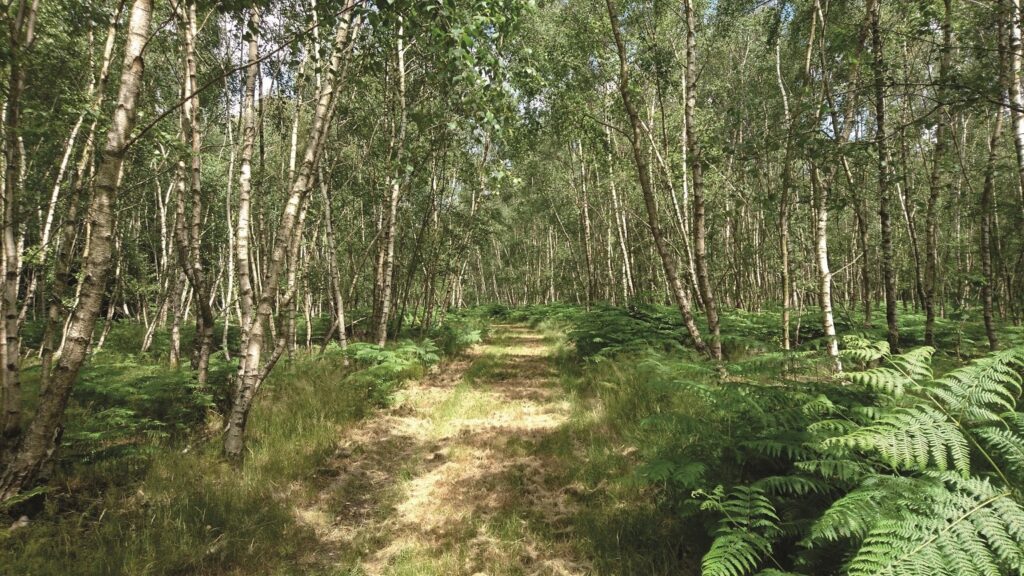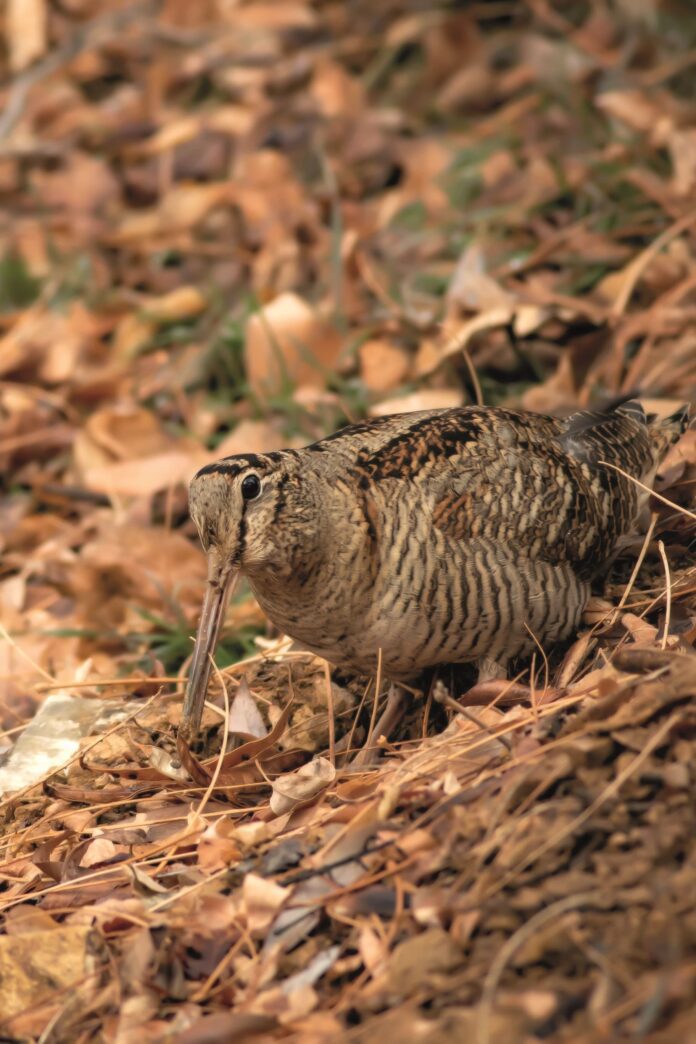Lighter Spring evenings mean the start of the ‘roding’ season for the normally shy woodcock. And this Spring sees the start of the decennial Breeding Woodcock Survey, being run nationwide by the GWCT and British Trust for Ornithology (BTO). The Breeding Woodcock Survey was first held in 2003 and repeated in 2013.
Between 1 April and 1 July hundreds of volunteers will station themselves in woodland clearings at dusk across Britain and Northern Ireland to record the ‘roding’ display flights of male woodcock. The survey aims to gather up-to-date evidence on the size and distribution of the resident breeding population of this Red-Listed, woodland-dwelling wader, which will help to inform woodcock conservation.
“The 2023 count should help us to understand if the worrying decline shown by the 2013 survey has continued in the intervening decade or if, in fact, breeding woodcock are holding their own in some parts of the British Isles,” said Dr Chris Heward of the GWCT, which leads the way in woodcock research in the UK
.
“With the help of hundreds of dedicated volunteers – BTO and GWCT members, seasoned ornithologists and casual wildlife-watchers – we hope to make this the largest and most accurate assessment of Britain’s breeding woodcock population to date,” continued Chris.
Watching the annual roding display offers a surprising view of this much-loved bird. Between March and July, male woodcock perform wandering twilight flights over the woodland canopy, squeaking and grunting as they go, searching for females who await in glades and rides below. These roding routes were once believed to be territorial patrols but are now known to be a lek-like display in which rival males compete for the right to mate. For the human observer, used to little more than a fleeting glance of a flushed bird, it is an opportunity to see woodcock in a very different light. Doing the survey also gives volunteers a chance to see other wildlife, such as nightjars, tawny owls and glow worms.
The Breeding Woodcock Survey uses a methodology specially developed by the GWCT that relies upon the woodcock’s conspicuous display behaviour during roding. Surveyors record sightings of displaying woodcock during a 75-minute period, starting at 15 minutes before sunset, and then submit their data to the national survey.
The data from across the UK allows GWCT scientists to produce density estimates for sites representing different regions and wood sizes. From this national sample, which organisers hope will exceed 1000 sites in 2023, they can extrapolate to regional and national estimates of population size. Running successive surveys over long periods also allows the team to assess population change over time; between 2003 and 2013, the British population estimate dropped by 29%.
“The 2023 survey may also show any potential benefits arising from the increasing woodland planting that we have seen over the life of the survey,” commented Chris. “We think woodcock like young woodland, so we are also asking survey volunteers to record some simple habitat measures, like the presence of newly-planted trees, that will help us understand any possible relationship with forestry management.”

Getting involved
The BTO and GWCT are delighted that volunteers have come forward in record numbers to help with the 2023 survey.
“If you have already registered to take part, please remember that it is important to complete all of your counts and submit your data by the end of July,” said Chris. “All survey data are of value to the project, including zero counts, which enable us to record areas where woodcock are absent. We are hopeful that, with your help, this will be the largest and most complete assessment of resident breeding woodcock in the UK.”
The majority of survey sites now have volunteers assigned to them, but there are still small numbers of vacant survey sites scattered across the UK. In some locations where there are fewer potential surveyors, such as in the North of England, mid-Wales and West of Scotland, we are particularly keen to encourage participation. There is still ample time to register and take part. For more details of how to get involved visit www.bto.org/woodcock
“By taking part in this survey, volunteers will provide an essential contribution to science and play a critical role in helping us determine the future conservation actions required to benefit this mysterious woodland bird,” commented David Norfolk of the BTO, who is leading the organisation of the 2023 Woodcock Survey.
“No particular bird skills or experience is required other than the ability to identify woodcock in roding flight, and familiarity with their unusual grunt and squeak flight calls. The survey also offers a unique opportunity to observe woodland wildlife just as day turns to night, providing a magical and memorable experience in the process,” said David.
Help keep news FREE for our readers
Supporting your local community newspaper/online news outlet is crucial now more than ever. If you believe in independent journalism, then consider making a valuable contribution by making a one-time or monthly donation. We operate in rural areas where providing unbiased news can be challenging. Read More About Supporting The West Wales Chronicle
























